New York strip vs ribeye steak: what’s the difference and which is best? Both of those answers can depend on a few factors. What’s your locale? What are you cooking? Those two are the most important here. Your locale will have a strong influence on what name each cut has and its availability. What you’re cooking in general will help you choose which is best.
I’ll go over what these cuts are, why they may have different names depending on your region, and how what you’re cooking will help your decision. I’ll also explain the similarities and key differences between these two cuts, and how they relate to similar cuts.
New York Strip vs Ribeye Steak: What’s the Difference?
Both are fairly similar as cuts of beef go, but the main difference between the two is their location on the animal.
Location, location, location
What differentiates all cuts of meat, whether it comes from a cow, pig, etc. is its location on the animal. The main reason these two cuts are so similar is that they come from a similar location that’s ideal for steaks. However, the exact name of these cuts also depends on your location.
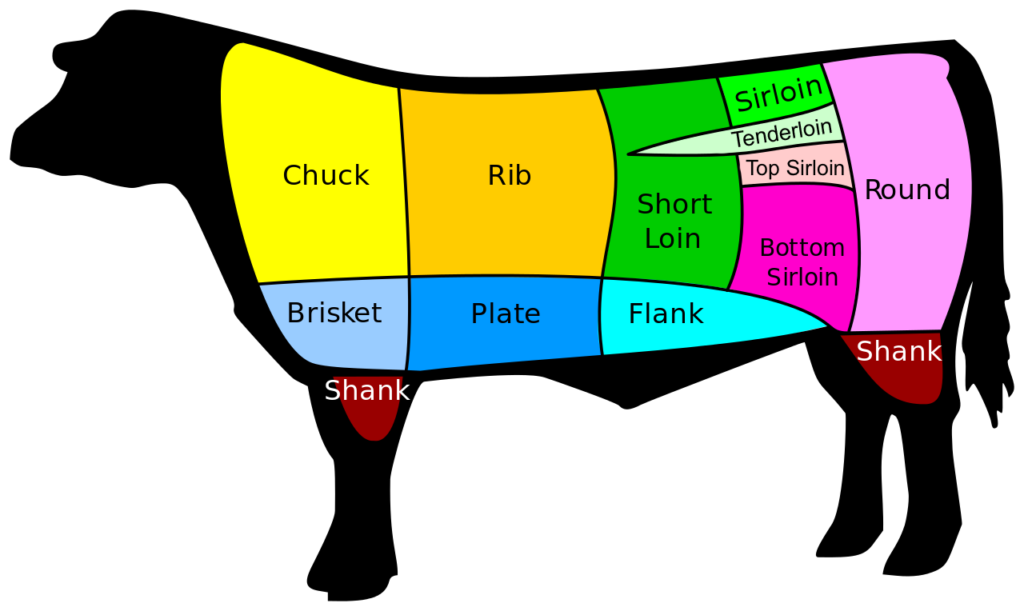
NY strip
New York Strip steaks are cut from the short loin subprimal. In British butchery, this is called the sirloin. This steak can have extensive marbling. This is because it comes from the longissimus dorsi muscle. This muscle does little work and thus has little connective tissue, making the meat very tender.
Depending on your location within the United States, this steak may be referred to as an ambassador steak, shell steak, boneless club steak, or Kansas City steak. Outside of the US, you may see this called a strip loin steak, sirloin, or contre-filet.
Ribeye
Ribeyes are a very flavorful steak cut from the rib subprimal, which neighbors the short loin to the front. It’s known for its marbling, which provides a rich and buttery taste and texture. The ribeye is typically cooked using high heat methods such as grilling, broiling, or pan-searing. It’s a popular choice for steak lovers and is often considered one of the most delicious cuts of beef available.
Often a bone-in cut, it can also be found boneless as well and may be labeled as a delmonico steak in this case. Conversely, a tomahawk steak is a bone-in ribeye with about 10 – 12 inches of bone beyond the meat.
Depending on your location within the United States, this steak may be referred to as a beauty steak, market steak, Spencer steak, or simply a rib steak. Outside of the US, you may see this called a Scotch fillet, entrecôte, or côte de boeuf.
How much does ribeye vs NY strip steak cost?
In general, beef prices are affected by the same forces that dictate the price of all other goods: supply and demand. In this case, how much a specific cut is available on each animal and how much people want to buy it.
The supply, as it described above, never changes. As long as the animal is consistently butchered, the percentage of each cut in relation to the whole animal remains constant. For these two cuts, the supply is relatively equal, so the supply side of the equation doesn’t affect the price difference very much.
The demand, however, is an ever-changing force influenced by the (perceived) quality of the cut, how it may or may not fit into a popular diet at that time, and the amount of press it receives (recipes, cooking shows, etc.).
So what is the price difference between ribeye and New York strip steak? These steaks have relatively similar demand, so because of this, they will typically sell at similar prices per pound. This is unless either has a higher USDA grading or is dry aged.
What is USDA grading?
Since 1917, the USDA has operated a voluntary beef grading program. You may have seen this at the grocery store, restaurants, etc. There are three primary grades you’ll see when purchasing beef: Prime, Choice, and Select. This is where the “prime” in prime rib comes from.
You may have noticed the word “voluntary” above. Participation in this grading program is not mandatory and you may find cuts of beef in the grocery store that have no grade. I’ve found this to be fairly rare, however, because most farms will use the grading system to better market their beef.
How can I use a ribeye and NY strip steak?
How you intend to use the steak is extremely important to know at the beginning of the decision process. Even though these two cuts are fairly similar, they are best used in certain applications. With this info, you can make sure that you’re playing to each steak’s strengths.
Both cuts are great choices to be served as a traditional steak! Everyone has their personal preferences, but for all the characteristics mentioned above, you can’t go wrong with either if you’re looking to eat a steak whole.
That being said, we’ve also used strip steak when making phở. This application here requires a paper thin cut of beef with robust flavor to be raw just before the hot broth is ladled over it.
How to cook ribeye and NY strip steak
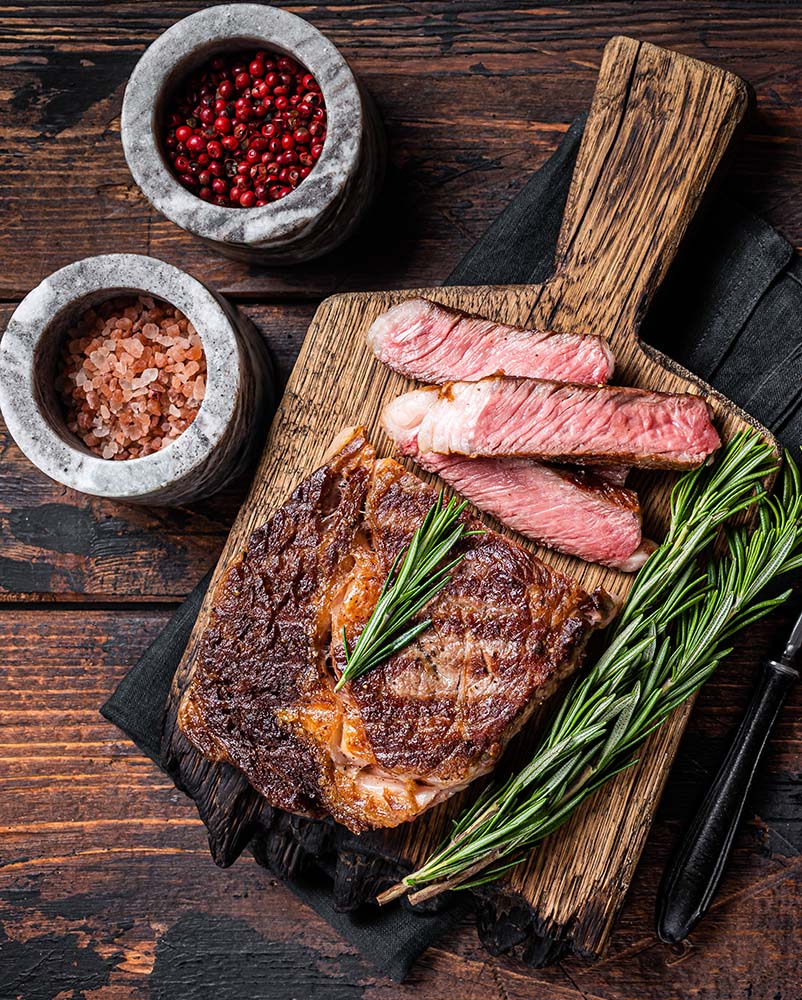
For most applications with both of these cuts, dry heat is best. If you have access to a grill, that would be your best bet. A grill is great at adding a lot of flavor to everything it touches. If that’s not an option though, a cast-iron skillet is the next best thing. It holds high heat in such a way that will ensure a good sear and a juicy steak.
There are also a few other notes to the cooking process when cooking a whole steak, regardless of heat source. First, season your steak. In most situations, simple seasonings are best. Next, let it sit at room temperature for about an hour. Then, make sure your grill, skillet, etc. is at a high temperature, and put on your steak.
You should aim for a doneness of medium-rare, which means it will have an internal temperature of 130°F on your meat thermometer. For most steaks of a 1.5 – 2 inch thickness, this will be achieved once you have a good sear on both sides – about 3 – 5 minutes per side. When you get the hang of this, there’ll be no need to temp steaks when cooking.
What is the best type of steak to buy?
This really depends on how you’re using this steak. All things being equal, if you’re looking to serve a whole steak, I recommend the bone-in ribeye steak. Between its tender texture and great flavor, it is often considered the best steak by many steak lovers, including me.
Though some have a personal preference for the NY strip because it often contains less fat. Its lower fat content means it is a bit more of a leaner cut than the ribeye. If this is something you’re looking for, then this is important to note.
Whichever cut of meat you choose, just make sure to buy quality beef from a reputable source. The meat should have a vibrant red hue, firm texture, and hold its shape. As with anything, the more you do it, the better you’ll get. So head to your local grocery store and check out their offerings on a regular basis to become more acquainted.
What are other popular steak cuts?
T-bone steak & porterhouse steak
T-bone and porterhouse steaks come from the same region as the strip steak: the short loin subprimal. Their connection to each other is like that of rectangles and squares. All porterhouse steaks are t-bones, but not all t-bones are porterhouse steaks.
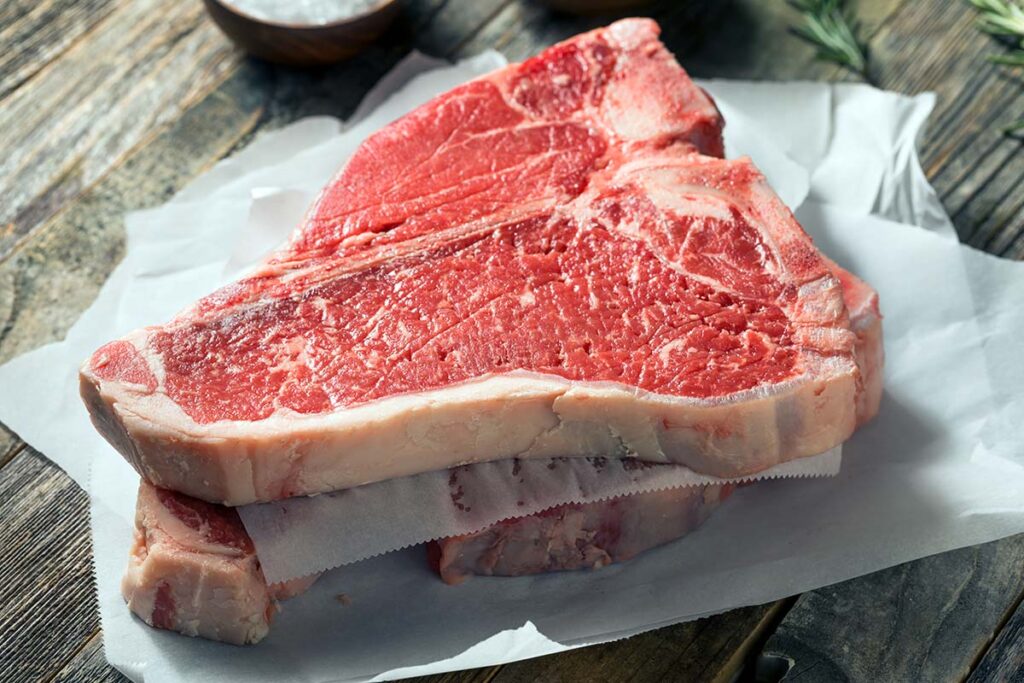
The two steaks are essentially a strip steak and a tenderloin held together by a t-shaped bone. The difference between the two has everything to do with the tenderloin – the subprimal of super-tender meat best known for the filet mignon.
There is differing guidance/opinions, however, on how much tenderloin must be present for a steak to be labeled a porterhouse or even a t-bone. The most important point to know is that a porterhouse steak has a larger portion of tenderloin.
Sirloin steak
In American butcher shops, the sirloin is a cut of steak from the sirloin subprimal, which is directly in front of the back legs. This subprimal is further divided into the top and bottom sirloin. While the top sirloin is mainly used for steaks and the bottom for roasts, many markets do sell both top sirloin steak and bottom sirloin steak.
In addition to grilling and serving sirloin like a typical steak, it has some other applications as well! We love to thinly slice it after it’s cooked for a delicious steak salad. You can also slice it before it’s cooked and sauté it for fajitas, stir fry, etc.
The sirloin and the aforementioned steaks can all be prepared in similar ways, which makes everything a little easier! If you have one available, I highly recommend grilling your steaks, as this will typically give them the best flavor. And it’s the most fun!

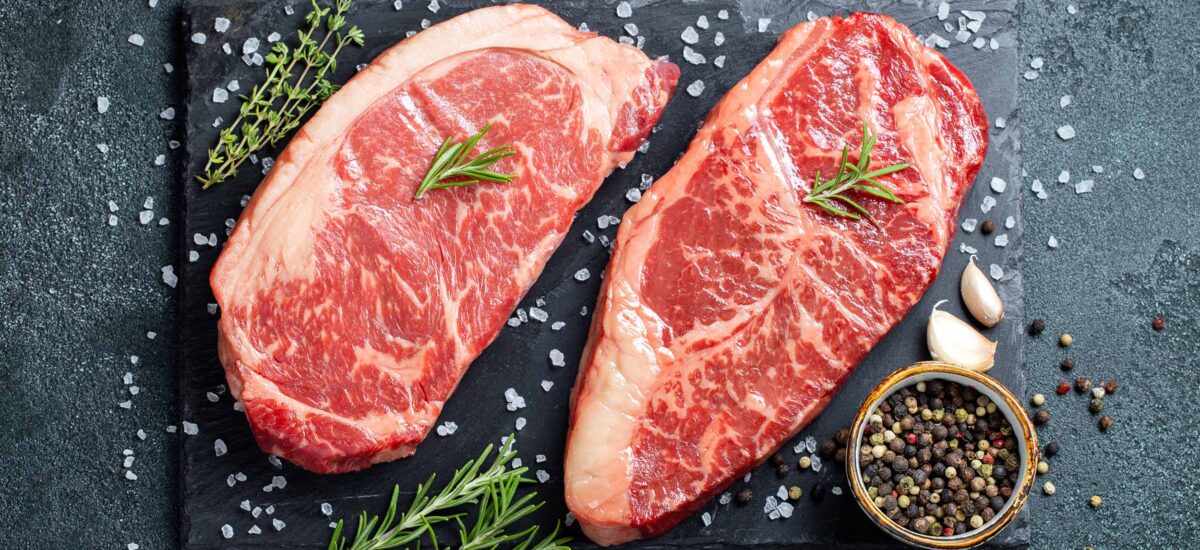

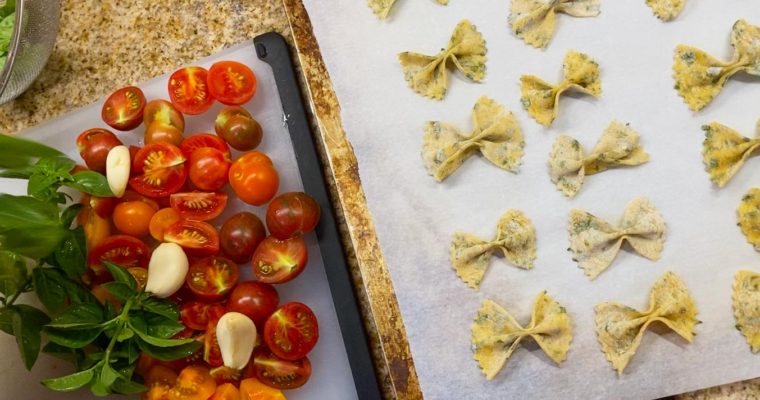

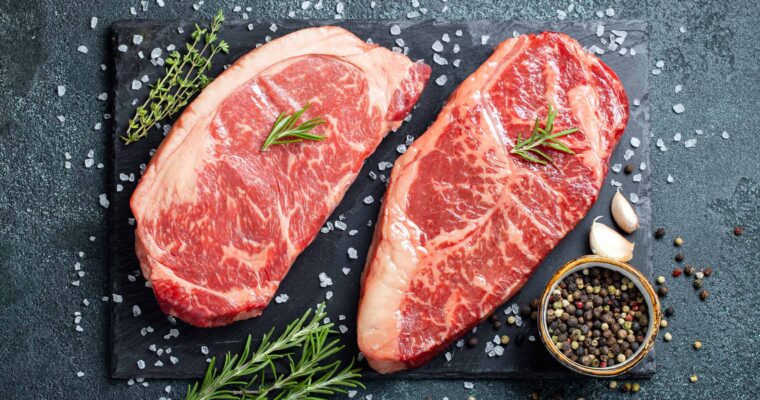
1 thought on “New York Strip vs Ribeye Steak: What’s the Difference?”